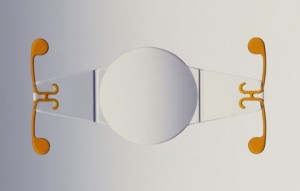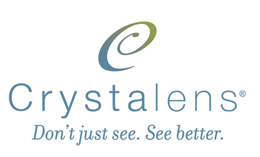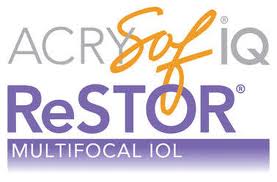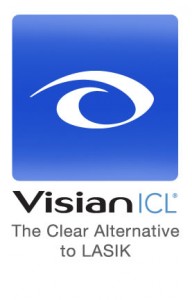Behler Eye & Laser Center is unique in offering patients a variety of refractive surgical options. Eliminating a patients’ dependence on glasses or contact lenses can be achieved through one of a variety or through a combination of surgical options. All options are carefully discussed with each patient. Offering these alternatives assures you of having the choice of surgery that is most effective and safe for you.
Refractive lens exchange is the same procedure as modern cataract surgery. Unlike laser procedures that alter the shape of the cornea, a refractive lens exchange alters the focusing power of the lens within the eye, leaving the cornea untouched. For this procedure, the eye’s lens is removed with a sophisticated computerized ultrasound technique called phacoemulsification. The lens is replaced with a lens implant that has been custom selected to provide the patient with the best vision without glasses. These lenses come in a variety of designs, materials, and powers.
Many patients are not candidates for laser vision correction either because of their refractive error, corneal thickness, and corneal irregularity. Candidates for refractive lens exchanges are usually but not always over the age of 45. Their refractive error is usually beyond what is acceptable with corneal laser procedures. Patients who are developing early cataracts might benefit from Refractive Lens Exchange.
Refractive Lens Exchange can correct most refractive errors including high degrees of nearsightedness, farsightedness and astigmatism. The procedure is safe with rapid visual stabilization and a long history of predictable outcomes. The procedure also eliminates the future need for cataract surgery.
Modern technological advances have greatly increased the accuracy of implant calculations. The IOLMaster is one such technology and is a dramatic step forward in the accuracy of refractive lens exchange implant calculation. The IOL Master is a quick, simple means of measuring implant power. Combining performance, accuracy, and simplicity, the IOL Master sets new standards in patient care.
There are many styles and materials of implants used for Refractive Lens Exchange. The choice of implant depends upon the patients’ individual exam and needs. The procedure is the same regardless of the implant style.
The phacoemulsifier is an ultrasonic probe that oscillates at 40,000 cycles per second. In essence, it gently turns a solid material into liquid simultaneously vacuuming it out. The capsular bag is polished and prepared for insertion of the implant. The implant chosen is then inserted into the capsular bag. It is the power of the implant that enables one to see without glasses with Refractive Lens Exchange.
 For patients who undergo Refractive Lens Exchange or Refractive Cataract Surgery this exciting implant technology enables both eyes to focus at all ranges of vision (distance and near) without the need for glasses. Crystalens works like the eye’s natural lens to allow most patients to see images that are near (inside 16 inches) intermediate (between 16 and 36 inches) and distance (36 inches and beyond) without glasses. Crystalens ™ is engineered with a hinge designed to allow the implant that you see through to move back and forth as you constantly change focus on images around you.
For patients who undergo Refractive Lens Exchange or Refractive Cataract Surgery this exciting implant technology enables both eyes to focus at all ranges of vision (distance and near) without the need for glasses. Crystalens works like the eye’s natural lens to allow most patients to see images that are near (inside 16 inches) intermediate (between 16 and 36 inches) and distance (36 inches and beyond) without glasses. Crystalens ™ is engineered with a hinge designed to allow the implant that you see through to move back and forth as you constantly change focus on images around you.
 Dr. Behler has extensive experience with the Crystalens and Crystalens patients and has been implanting these implants for over 10 years. After talking to patients who have lived with the Crystalens for years Dr. Behler knows who are the best candidates for this technology. With Crystalens ™ your vision will not only be brighter, but you may be free of those things that made you look or feel older. Crystalens ™ will give you the ability to reconnect you to the people and things that matter most. As with any of the premium lenses it is important the implant fit your individual lifestyle. This is why it is so critical to spend the time finding out what lens implant is best for you.
Dr. Behler has extensive experience with the Crystalens and Crystalens patients and has been implanting these implants for over 10 years. After talking to patients who have lived with the Crystalens for years Dr. Behler knows who are the best candidates for this technology. With Crystalens ™ your vision will not only be brighter, but you may be free of those things that made you look or feel older. Crystalens ™ will give you the ability to reconnect you to the people and things that matter most. As with any of the premium lenses it is important the implant fit your individual lifestyle. This is why it is so critical to spend the time finding out what lens implant is best for you.
For more information to see if Crystalens ™ is right for you contact Dr. Behler.
 ReStor LensReStor Lens is a revolutionary technology and a dramatic step forward in addressing the needs of patients in the presbyopic age group having cataract or lens based surgery. In our forties we begin to lose our ability to read without some form of correction. This condition is called presbyopia. Historically the only ways of dealing with presbyopia include reading glasses, monovision or bifocal contact lenses.
ReStor LensReStor Lens is a revolutionary technology and a dramatic step forward in addressing the needs of patients in the presbyopic age group having cataract or lens based surgery. In our forties we begin to lose our ability to read without some form of correction. This condition is called presbyopia. Historically the only ways of dealing with presbyopia include reading glasses, monovision or bifocal contact lenses.
Intraocular lenses implanted during cataract surgeries enable patients to reduce their dependence on glasses. Without these lenses patients would have to wear the coke bottle glasses worn by our great grandparents. The most commonly used implants over the past 20 years are monofocal implants. These lenses enable each eye to see at near or far but never both. ReSTOR lens enables patients to see at near and far without glasses.
AcrySof ® ReSTOR ® IOL the first and only apodized diffractive IOL for cataract patients with and without presbyopia, uses a unique, patented apodized diffractive technology to provide patients with a full range of quality vision (near, intermediate and distance), and greatly reduce their reliance on glasses. This optic design results in an increased range of quality vision that delivers a high level of spectacle freedom.
Apodization improves image quality by optimizing light energy delivered to the retina by distributing the appropriate amounts of light to near and distant focal points, regardless of lighting situation. This new ReStor lens is particularly well suited for patients who wish to reduce their dependency on reading glasses and bifocals once their cataract lens is removed. The AcrySof ® ReSTOR ® IOL is based on the AcrySof ® design and material platform. AcrySof ® lenses are the fastest growing and most frequently implanted lenses in the world, with more than 22 million implants since their introduction in the early 1990s. There are approximately three million cataract surgeries performed annually in the United States.
Equally important in the choice of implants are the measurements required to calculate the implant power. In order to obtain superior results the calculation must be extremely accurate. At Behler Eye and Laser we use ocular coherence biometry to calculate the implant power. Ocular coherence biometry represents a fivefold increase in accuracy than standard ultrasound and is critical in achieving accurate results.
The Acrysoft ReSTOR lens has been an exciting addition to our practice. It is one more advancement further improving the quality of life for our patients.
 The Visian ICL is a lens that is implanted in front of the crystalline lens. Unlike refractive lens exchange, this lens is implanted without removal of the crystalline lens. The procedure is painless and takes only minutes with a rapid recovery. The Visian ICL lens is designed to correct moderate to severe degrees of myopia and is ideal for patients who are not candidates for LASIK. It is also reversible. Dr. Behler implanted intraocular lenses for 20 years and implanted his first ICL over 6 years ago. We are pleased to offer this exciting technology to our patients. “The results and patient satisfaction we are seeing with this lens have been nothing short of miraculous.”
The Visian ICL is a lens that is implanted in front of the crystalline lens. Unlike refractive lens exchange, this lens is implanted without removal of the crystalline lens. The procedure is painless and takes only minutes with a rapid recovery. The Visian ICL lens is designed to correct moderate to severe degrees of myopia and is ideal for patients who are not candidates for LASIK. It is also reversible. Dr. Behler implanted intraocular lenses for 20 years and implanted his first ICL over 6 years ago. We are pleased to offer this exciting technology to our patients. “The results and patient satisfaction we are seeing with this lens have been nothing short of miraculous.”
The Visian ICL is similar to a contact lens that is placed in the eye to correct a wide range of refractive errors. The procedure is reversible and does not alter the shape of the cornea.
The material is called Collamer, an advanced lens material that is highly biocompatible. Collamer does not cause a reaction inside the eye and contains an ultraviolet filter that provides protection to the eye.
If you are between 21 and 50 and nearsighted, you are an excellent candidate for Visian ICL. It is preferable that you have had no previous ophthalmic surgery or history of ophthalmic disease.
Visian ICL is placed behind the iris and in front of the eye’s crystalline lens. The lens does not touch any internal eye structures and stays in position.
The Visian ICL is able to correct a wide range of nearsightedness without removal of corneal tissue or the crystalline lens. Currently patients with eyeglass prescriptions up to (30) diopters can be corrected. Using only eye drop anesthesia the implanted is folded and gently inserted through a small incision. The procedure takes only minutes and the visual recovery is rapid.
Visian ICL offers treatment flexibility. If your vision changes dramatically due to developed a cataract the lens can be removed and replaced. Another procedure can be performed at any time. With Visian ICL, you can wear glasses or contact lenses if necessary.
One to two weeks prior to surgery, your doctor will make a small opening with a laser to allow fluid to pass between the lens and the front chamber of the eye. The actual Visian ICL procedure typically takes approximately 10 minutes and is performed on an outpatient basis. (Please note that someone will have to drive you to and from surgery.) Normally, very little discomfort is associated with this procedure. A light topical or local anesthetic is administered and a mild sedative may be given. Eye drops or oral medication may be prescribed. You will come back the next day for a follow-up visit.
No. Visian ICL avoids problems experienced with traditional contact lenses. It is designed to remain in place inside your eye, without maintenance. A routine, annual visit with your eye doctor is recommended to make sure everything is fine.
The Visian ICL is intended to remain in place in the eye without maintenance. Should it become necessary, your surgeon can safely remove the lens
No. Because the lens is positioned behind the iris it is invisible to both you and observers. You enjoy a cosmetic appearance that is natural. Only your doctor will be able to tell that vision correction has taken place.
The lens is not noticeable after it is put in place. It does not attach to any structures within the eye and stays in position.
 A large percentage of Americans are born with or develop at least one eye condition over the course of their lives. Eye conditions are not limited to myopia, hyperopia, presbyopia and astigmatism, which all alter the way light enters through the lens and reflects on the retina. Many other eye diseases and disorders change the way people see as they get much older.
A large percentage of Americans are born with or develop at least one eye condition over the course of their lives. Eye conditions are not limited to myopia, hyperopia, presbyopia and astigmatism, which all alter the way light enters through the lens and reflects on the retina. Many other eye diseases and disorders change the way people see as they get much older.
Macular degeneration, for instance, affects the macula, a small area at the back of the human eye near the optic nerve and in front of the retina. When this starts to deteriorate past the age of fifty, vision is lost in the central field, even though patients can still see in their peripheral vision. This is not to be confused with other eye conditions such as diabetic macular edema or diabetic eye. New technology can correct this problem.
Another eye disease is glaucoma. The pressure within the human eye is perfectly balanced. When the pressure increases, it presses upon the optic nerve and can cause retina detachment. It’s similar to a disc in your back slipping out of place and putting pressure on a nerve that in turn causes a body part to lose all sensation or use.
Trust Dr. Behler for laser surgery which has now been approved for all of these eye conditions; not just for young people to avoid glasses but also for retirees who are spending some of their retirement funds to fix and heal their eyes with laser surgery . What a great way to celebrate retirement- with perfect visual clarity! Contact us today to schedule an appointment to find out how you can join the hundreds of satisfied patients in and around Tampa, Clearwater and St. Petersburg!